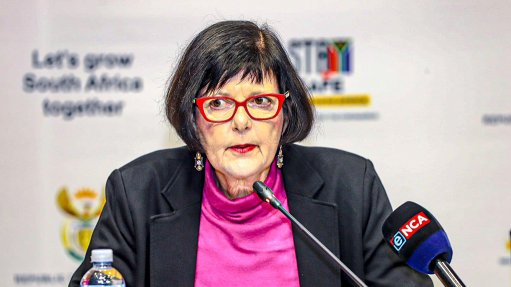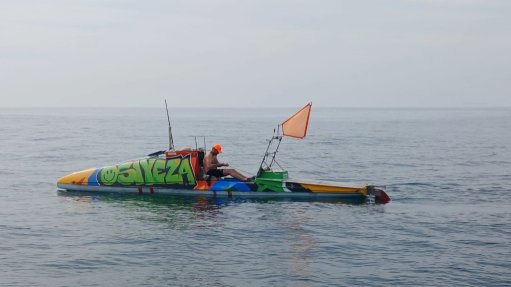Council implements measures to verify qualifications


PROJECT RISKS Organisations that hire persons who provided false documentation are at risk if accidents occur during their construction projects
The South African Council for the Project and Construction Management Professions (SACPCMP), with the development of an upgraded registration system, has been implementing additional security measures pertaining to its registration certificates since 2020.
This is a result of fake, hard-copy registration certificates being used initially, which has developed into the use of digital fakes, states SACPCMP Registrar Butcher Matutle.
He adds that the frequency with which the digital fakes are used has increased, with falsified SACPCMP registration certificates easily available.
“The falsification and distribution of an official document that attests to a government-mandated, legal requirement is a serious offence. The submission of falsified documents during an interview is also a criminal offence.”
Organisations that hire persons who provided false documentation are at risk if accidents occur during their construction projects, if it transpires that imposters were hired without due diligence and investigation, explains Matutle.
The SACPCMP uses various measures to verify registration certificates.
Firstly, authentic registration certificates include a QR code that links directly to a live, online validation system.
Scanning this QR code using a mobile device enables organisations to verify the validity of a person’s registration status, and whether the submitted certificate is fraudulent.
If the name on the certificate does not match the name shown on the online validity system, the certificate is not genuine, says Matutle.
Secondly, incorrect start and end dates is another indicator that documents are false.
The SACPCMP’s registration period aligns to its financial year, which starts in April and culminates at the end of March the following year – this aligns to the validity of all certificates.
Any differentiations in the validity dates on certificates, and which do not correspond with the SACPCMP financial year, should be queried directly with the council.
If a certificate is presented with end dates other than March, the document is fake, he stresses.
Thirdly, the council also provides a live, online search system through which organisations can verify if employees or applicants are registered and in good standing.
To validate the registered person with the certificate that has been presented, it is recommended to use the search and validation function of the SACPCMP’s online portals.
Differing certificate designs can also raise suspicion in terms of authenticity.
The current design of the SACPCMP registration certificates have been gazetted; therefore, older designs indicate that a certificate is no longer valid.
“The council has regularly communicated the means of validating its registration certificates to its stakeholders, but has called for further vigilance on behalf of employers in the private and public sectors.
“The SACPCMP also provides a certificate authenticity guide, which highlights the ways in which stakeholders can verify certificate authenticity and identifies various aspects on the certificate that should be reviewed.”
The council also launched a dedicated fraud hotline in April this year through which people are encouraged to report unethical behaviour and fraud.
Ensuring High Standards
After having received comments, tip-offs and screenshots, the SACPCMP is investigating the details of, and persons associated with, the recent fake certificate social media posts.
The council will aim to work with its voluntary associations, other councils for the built environment and government stakeholders to ensure that the criminals involved in such behaviour are exposed and appropriately charged, Matutle declares.
However, he stresses that it is essential that stakeholders – including employees – are urged to familiarise themselves with the guide on identifying fraudulent certificates.
“We need employers and recruitment agencies to be proactive in validating the certificates they are provided. Use the certificate authenticity guide, check the certificate that you receive and use the SACPCMP validation search function.”
He adds that if the council is advised of registered persons engaged in distributing or creating fraudulent documents, the council will prosecute these offenders to the “fullest extent of the law.”
Matutle says using people who are not suitably skilled or qualified presents risks to the built environment.
“Our registered persons work hard to ensure their professional registrations are in place and it is a damaging violation to jeopardise the good name of bona fide registered persons through the manufacturing and submission of fake documentation.”
Employing such people means that construction standards and requirements are put at risk, which heightens the safety risk.
This fraudulent activity casts a shadow on a sector that must continually strive for the highest levels of ethics to encourage trust from society and industry, Matutle adds.
“Persons who engage in fraudulent behaviour, which, in turn, contradicts the professional code of conduct in the built environment, can be prosecuted in terms of the Project and Construction Management Professions Act, No.48 of 2000. They can face fines and run the risk of being struck off the register of professionals in the project and construction management professions,” he concludes.
Comments
Announcements
What's On
Subscribe to improve your user experience...
Option 1 (equivalent of R125 a month):
Receive a weekly copy of Creamer Media's Engineering News & Mining Weekly magazine
(print copy for those in South Africa and e-magazine for those outside of South Africa)
Receive daily email newsletters
Access to full search results
Access archive of magazine back copies
Access to Projects in Progress
Access to ONE Research Report of your choice in PDF format
Option 2 (equivalent of R375 a month):
All benefits from Option 1
PLUS
Access to Creamer Media's Research Channel Africa for ALL Research Reports, in PDF format, on various industrial and mining sectors
including Electricity; Water; Energy Transition; Hydrogen; Roads, Rail and Ports; Coal; Gold; Platinum; Battery Metals; etc.
Already a subscriber?
Forgotten your password?
Receive weekly copy of Creamer Media's Engineering News & Mining Weekly magazine (print copy for those in South Africa and e-magazine for those outside of South Africa)
➕
Recieve daily email newsletters
➕
Access to full search results
➕
Access archive of magazine back copies
➕
Access to Projects in Progress
➕
Access to ONE Research Report of your choice in PDF format
RESEARCH CHANNEL AFRICA
R4500 (equivalent of R375 a month)
SUBSCRIBEAll benefits from Option 1
➕
Access to Creamer Media's Research Channel Africa for ALL Research Reports on various industrial and mining sectors, in PDF format, including on:
Electricity
➕
Water
➕
Energy Transition
➕
Hydrogen
➕
Roads, Rail and Ports
➕
Coal
➕
Gold
➕
Platinum
➕
Battery Metals
➕
etc.
Receive all benefits from Option 1 or Option 2 delivered to numerous people at your company
➕
Multiple User names and Passwords for simultaneous log-ins
➕
Intranet integration access to all in your organisation



















